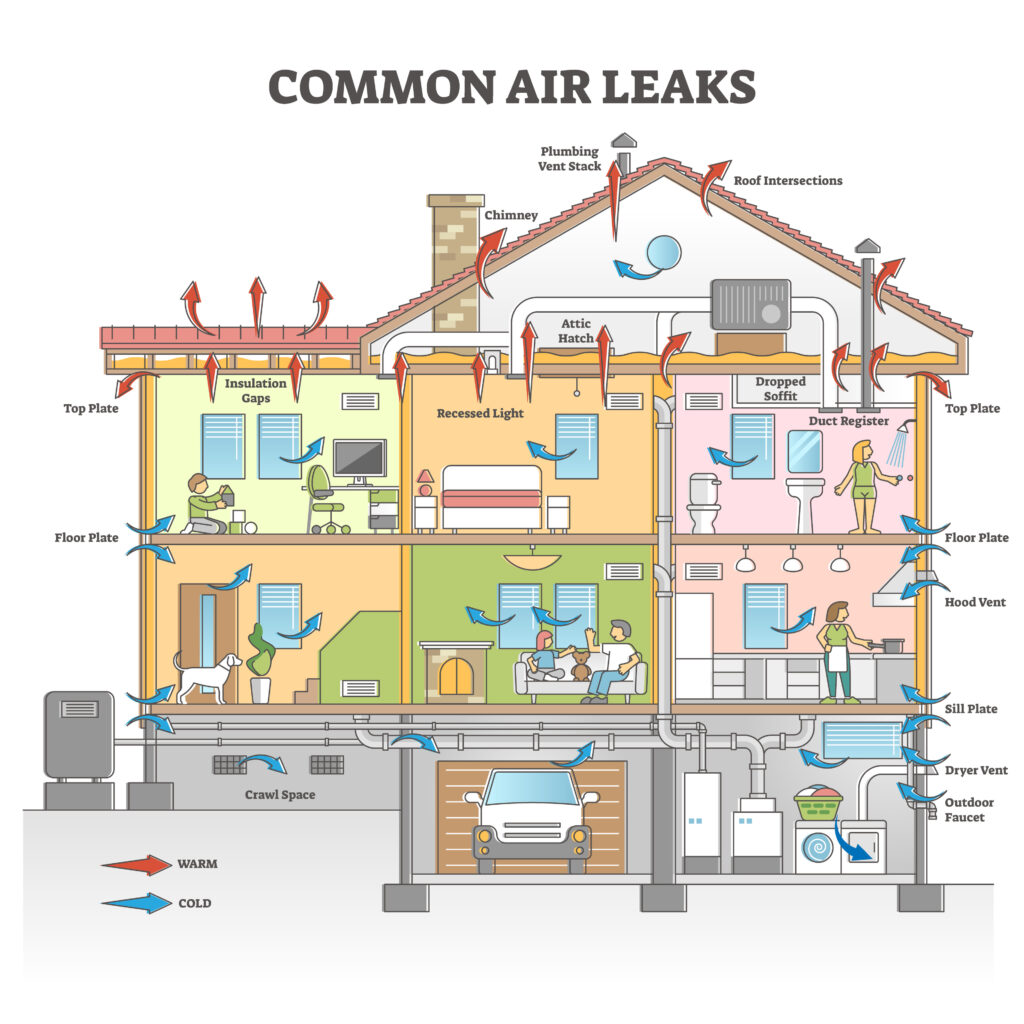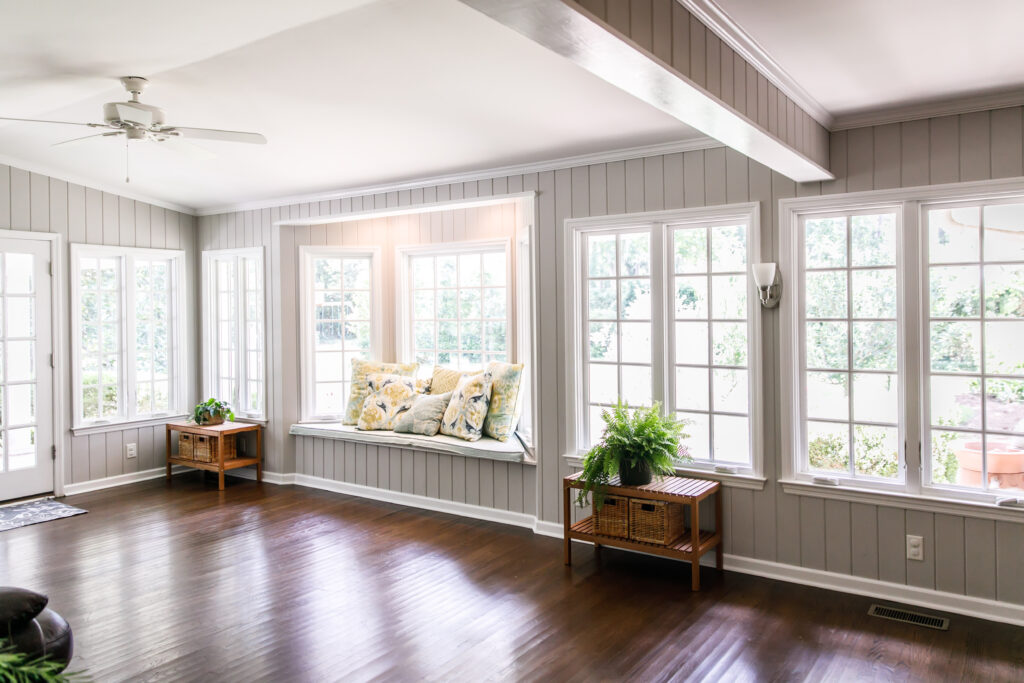A 30-minute DIY Energy Audit for House Hunters
When you’re buying a house, one of the many things to consider is how energy-efficient the house is–something that won’t show up in disclosures or pre-purchase inspections. Energy audits are fairly involved, however, and can take professionals hours to complete. Our alternative won’t be nearly as comprehensive, but even a shortened version of the audit process can give you an idea of the changes you may need to improve energy efficiency and knock down your utility bill.
(5 minutes) Request and examine yearly energy bills.
Energy audits are important. They can help you understand how well a house is currently using energy versus how well it could potentially use energy in the future. So looking at the house’s current energy usage is an important starting point.
An average energy bill in California is $90/month, so anything higher is a great reason to continue the audit.
You should start with the home’s current energy bill and subtract all the changes you expect to make to it, based on your energy audit, to estimate your future energy bill for the house.
(8 minutes) Search out air leaks or drafts.
Real estate law requires any cracks in the foundation to be disclosed to the buyer. But smaller cracks may often be passed over. These can be found at junctures of the house (e.g. between the wall and floor, doors and walls, etc.). You should also check around windows, lighting fixtures, plumbing fixtures, switches, and electrical outlets.
The amount of money that fixing these air leaks will save you depends on how large the crack is and where it’s located. But for the sake of easy calculations, we’ll say that each crack saves you $1 per month on your bill. So if you discover that there’s a crack between the floor and the front door, and one between a wall and a window in the basement, fixing them both might save you $2/month on your bill. This doesn’t seem like a lot of money, but over twelve months a year and thirty years of home ownership, it adds up.
(5 minutes) Check the attic and basement insulation. 
Make sure the thickness and type of attic insulation meets current recommendations. The Department of Energy recommends that attic insulation be between 12’’ and 15’’ thick. If the basement walls are uninsulated, the ceiling between the first floor and the basement should also be insulated. The recommended thickness of basement ceiling insulation is about the same, at 9’’ to 12’’. This insulation should also cover holes in ductwork, pipes, and chimneys.
Again, the amount of heat energy (and therefore the amount of money) lost through poor insulation should really be calculated on a case-by-case basis. But estimates put the monthly savings at $50.
(2 minutes) Inspect heating and cooling units.
There are a lot of ways to inspect these units, but the only thing we’ll have time for here is to check how old they are. Any HVAC units or water heater units older than ten years old are on the verge of needing to be replaced.
An update of either of these units could save you $42 a month.
(2 minutes) Examine the lightbulbs.
This is the easiest step of the energy audit. Check the lightbulbs throughout the house; incandescent and fluorescent light bulbs are up to 80% less efficient than LED lightbulbs, and can be an energy drain.
The Washington Post reported in 2018 that upgrading all the lightbulbs in a house from 75 watt incandescent to 11 watt LEDs, homeowners would save $50 a month–and upgrading would only cost $160.
(1 minute) Inspect appliances.
We won’t have a lot of time on this step either, but it’s important to note whether the refrigerator is energy-efficient. A quick Google search of the brand of refrigerator should get you its information, and you can decide for yourself whether it’s good enough or not. Updating from a ten-year-old refrigerator is estimated to save you about $10 a month.
(2 minutes) Analyze the wall area and the number and size of windows.
A lot of windows compared to other houses–an entire wall of windows, for example–or a larger wall area than other houses, might also be reasons for a higher-than-average energy bill. A long, skinny house would have more wall area than a square house.
The reason the number of windows matters is that cooled or heated air can escape through them to the outside. There are newer brands of windows, however, that can decrease the amount of air that escapes. If the older windows are ten years old, upgrading to newer, more energy-efficient windows could save you up to $10 a month.
(5 minutes) Analyze the behavior of the family currently living there.
Is anyone home during working hours? If the current residents spend working hours at home, but you won’t, their energy bill will be higher than yours. How many residents are there? If they have more residents than you will when you move in, your energy bill will be lower than theirs. What is the average thermostat setting? If you’re comfortable adjusting the thermostat to be warmer in the summer and cooler in the winter, your energy bill will be lower.
Behavior changes can substantially decrease the energy bill, but again, this is something that’s more accurately calculated on a case-by-case basis.
So there was your thirty-minute, minimally invasive energy audit to be performed during a tour. You can use these tips not only to estimate your energy bill with your new home, but also to ensure that the house is as well-kept as you hoped.
References:
https://www.energy.gov/energysaver/home-energy-audits/professional-home-energy-audits
https://home.howstuffworks.com/green-living/home-energy-audit1.htm
https://www.opendoor.com/w/blog/what-to-look-for-on-a-house-tour
https://www.washingtonpost.com/lifestyle/home/why-you-should-switch-to-led-lightbulbs-right-now-before-the-law-requires-it/2018/01/16/c2d915f4-f0a2-11e7-b3bf-ab90a706e175_story.html




